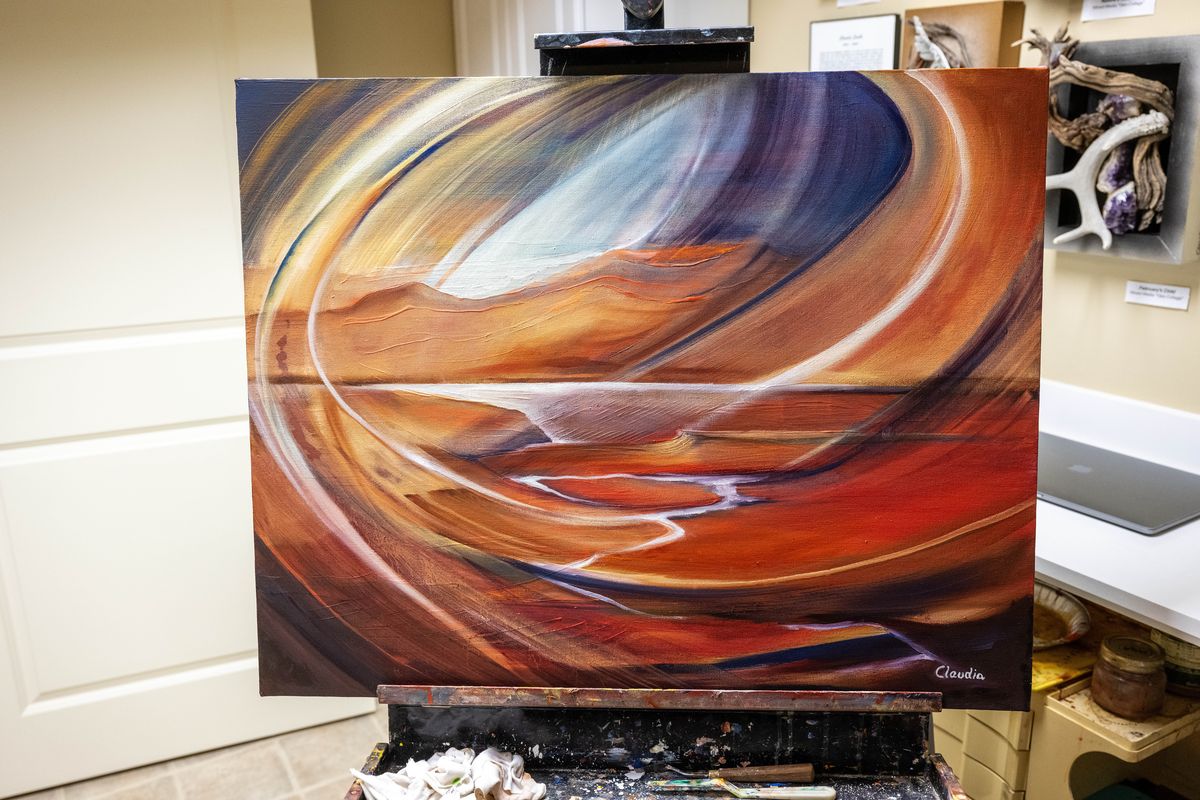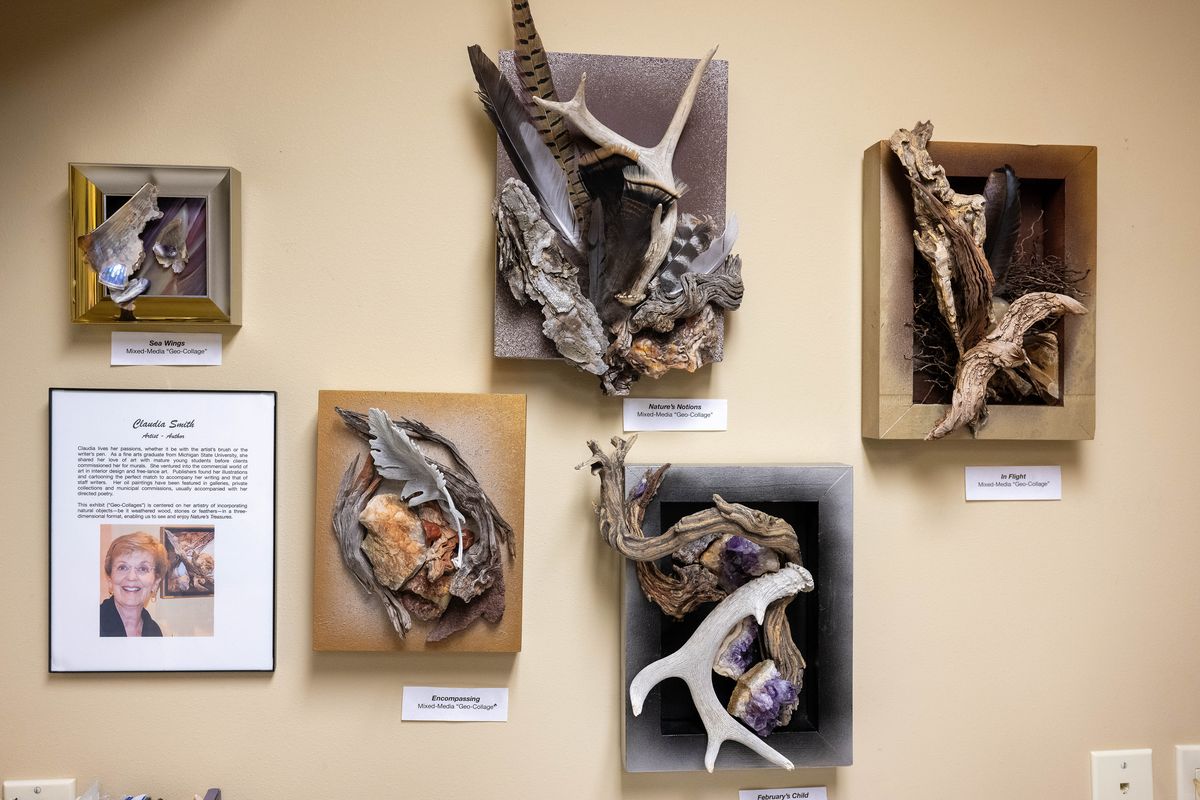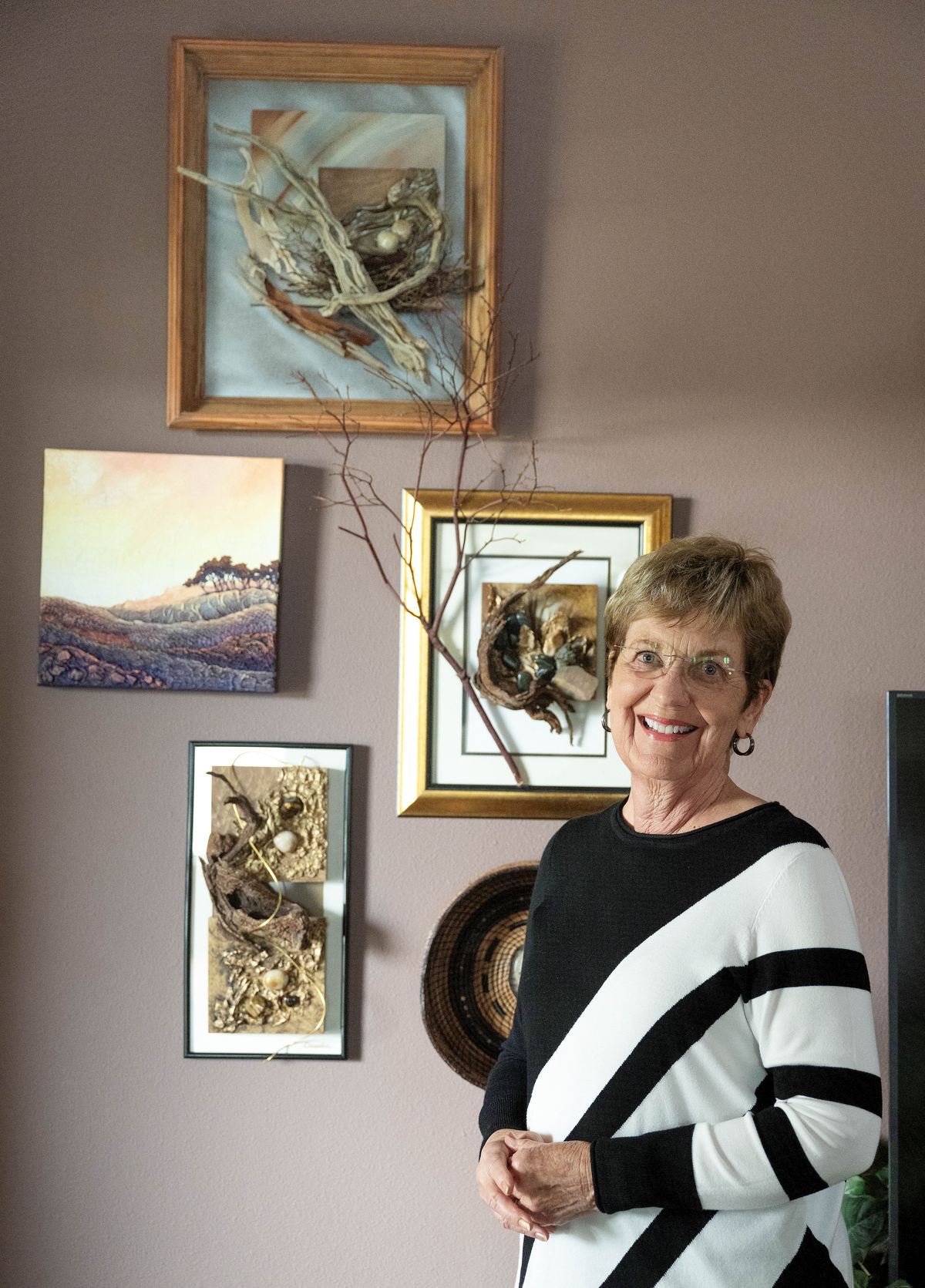The Collector: Claudia Smith searches ground for rocks, feathers and other objects that become collages
Artist Claudia Smith has many of her completed artworks on display in her south Hill basement studio. Claudia Smith collects rocks, weathered wood, feathers, fossils and odd sets of deer antlers from both Arizona, where she winters, and Washington where she summers. She turns these natural artifacts into artwork. (COLIN MULVANY/THE SPOKESMAN-REVI)
Lifelong artist and former high school art teacher Claudia Smith finds sources of inspiration in a collection culled from Mother Nature.
Her creative spark can come from something as light as a feather or as weighty as a piece of weathered wood. For example, an abstract painting in her South Hill home has a small feather affixed in the corner.
“It’s called ‘And She Dreamed of Feathers,’ ” Smith said.
She and her husband, Hal Hunt, divide their time between Arizona and Spokane, so her collection of natural artifacts spans both states.
Smith said the collection started with a piece as old as time – a fossil.
Cradling an ammonite (a fossilized snail) in her hands, she pointed out the delicate markings on its porous surface.
“My parents found this on one of their trips, and after they died I went through their rock collection,” she said. “I was brought to tears by this ammonite. It’s millions of years old, but once held life.”
And so she began to keep her eyes peeled for nature’s discards. Deer antlers, abandoned quail eggs, interesting leaves and colorful rocks.
“I get very excited when I find the perfect whatever,” she said. “It’s a magical moment.”
Smith incorporates many of her finds in mixed media geo-collages.
“Everything on here I picked up from the ground,” she said, pointing to a collage in her living room. “Except for the tiger eye. I got that at a shop in Arizona.”
Sometimes the items she picks up don’t come from nature – such as twists of copper wire from construction sites, unsold jewelry from a friend’s shop.
Copper wire winds through a 3D geo-collage called “Ebony and Ivory,” and jewelry mixed with rocks is layered atop several framed paintings. Her Arizona home offers unique artifacts like saguaro cactus boots.
“When woodpeckers peck holes into a cactus, it forms a boot, like a bandage,” Smith said. “When the cactus dies, you can find these boots.”
She’s incorporated several of them into collages.
“I never stop learning new techniques.”
On an easel in her studio, swirling earth tones reveal a vibrant work in progress. Smith picked up a curved piece of weathered wood and held it to the bottom of the canvas.
“I like movement and energy,” she said. “I love energy contained on a canvas.”
On a wall, amethyst gleaned from a mine near their Fountain Hills, Arizona, home mingles with cactus remnants and a deer antler in a piece called “February’s Child.”
Plastic bins packed with seed pods, animal bones and dried mushroom caps await her inspiration. She finds beauty even in dirt, like the dried red mud of Arizona. Her sister pried up a couple of small slabs of mud for her to use in future projects.
She gazed at all of the pieces of her collection – each item filled with potential.
“Even if I never use them, I like looking at them,” Smith said.
Unusual shapes often catch her eye, but she finds possibilities even in the ordinary. She picked up a sheaf of pine needles.
“I’m picturing a more traditional painting,” she said. “Maybe I’ll call it ‘Reeds.’ ”
While she often adds her own creative touches to the things she’s found, Smith enjoys the unadorned beauty of a shiny rock, the fringe of a pheasant feather or the intricate roots of an agave plant.
“Nature is a wonderful artist,” she said.



